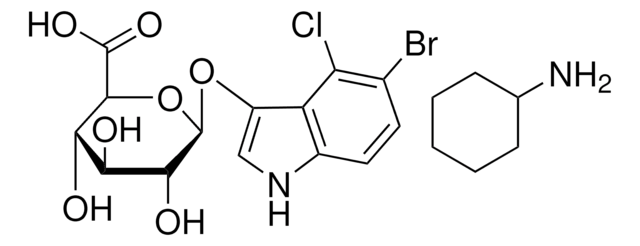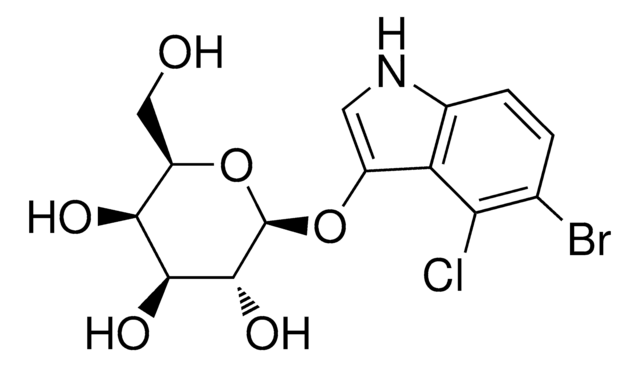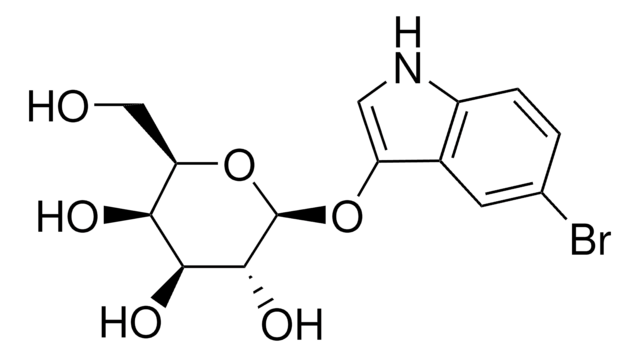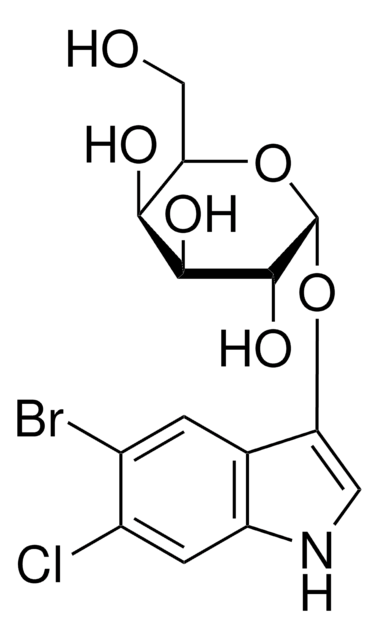B3928
Blue-White Select™ Screening Reagent
for selection of recombinant bacterial clones
Synonim(y):
Blue-White Reagent, Screening Reagent, Selection Reagent
About This Item
Polecane produkty
klasa czystości
for molecular biology
Poziom jakości
Postać
liquid
zastosowanie
sufficient for 125 dishes (90 mm)
metody
nucleic acid detection: suitable
przydatność
suitable for nucleic acid staining
Warunki transportu
dry ice
temp. przechowywania
−20°C
Opis ogólny
Cechy i korzyści
- Intense color contrast for easy colony selection
- Convenient, ready-to-use solution
Komponenty
40 mg/mL X-Gal
(prepared in DMSO)
Zasada
The technique is based on vectors such as the pUC and the M13mp series that carry a fragment of the β-galactosidase gene encoding an a-fragment of β-galactosidase. Exploitation of these vectors requires use of a bacteria strain carrying the complementing gene fragment to allow the assembly of an active complex, resulting in the formation of blue colonies. Disruption of the ß-galactosidase gene by insertion of a DNA fragment into the vector′s multiple cloning site results in the loss of functional β-galactosidase activity; these colonies remain white, allowing for easy differentiation between lac+ and lac- colonies.
Informacje prawne
produkt powiązany
Kod klasy składowania
10 - Combustible liquids
Klasa zagrożenia wodnego (WGK)
WGK 3
Temperatura zapłonu (°F)
188.6 °F
Temperatura zapłonu (°C)
87 °C
Środki ochrony indywidualnej
Eyeshields, Gloves, type ABEK (EN14387) respirator filter
Certyfikaty analizy (CoA)
Poszukaj Certyfikaty analizy (CoA), wpisując numer partii/serii produktów. Numery serii i partii można znaleźć na etykiecie produktu po słowach „seria” lub „partia”.
Masz już ten produkt?
Dokumenty związane z niedawno zakupionymi produktami zostały zamieszczone w Bibliotece dokumentów.
Protokoły
Blue/white color selection is a routine technique employed by molecular biologists. This technique simplifies the differentiation between colonies/plaques that contain a cloning vector without an insert and those that contain a vector harboring an insert of interest.
Nasz zespół naukowców ma doświadczenie we wszystkich obszarach badań, w tym w naukach przyrodniczych, materiałoznawstwie, syntezie chemicznej, chromatografii, analityce i wielu innych dziedzinach.
Skontaktuj się z zespołem ds. pomocy technicznej





